Have you ever wondered why penguins don't freeze to death? Penguins have to cope with an immensely harsh environment with extremely cold temperatures and added wind chill.
Animals who live in cold countries tend to have several special adaptations that keep them warm.
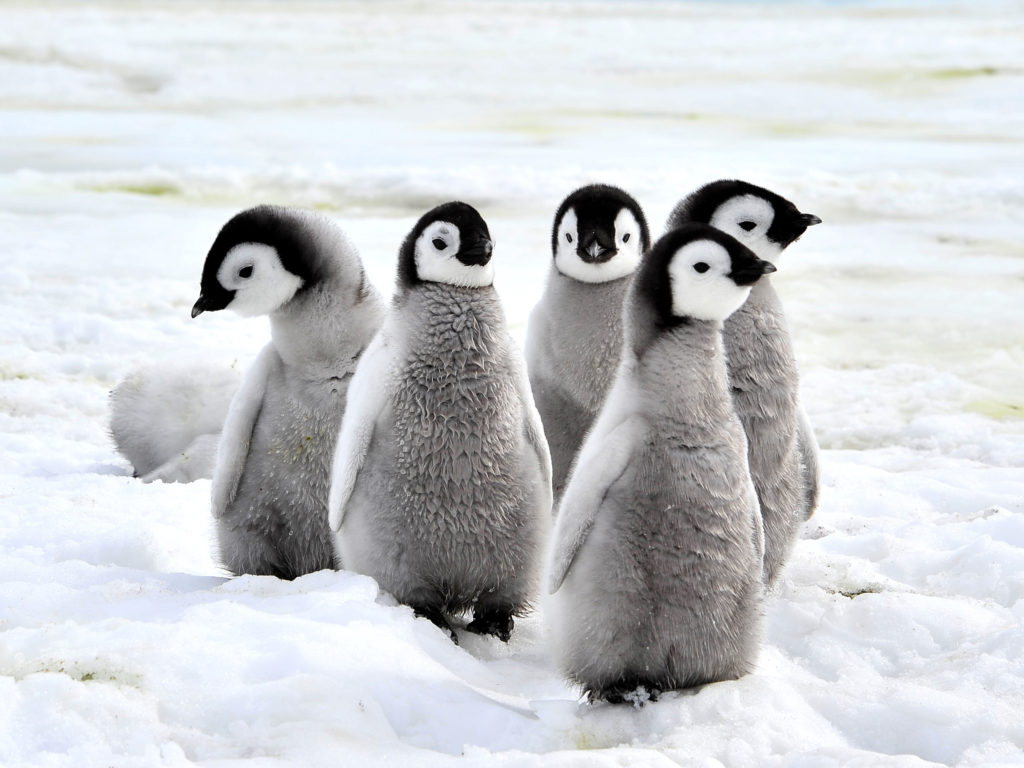
Penguins living in cold climates stay warm thanks to their thick feathers and blubber under the skin. Feathers are great on land but not much help for keeping warm in the cold ocean. This is where the blubber layer comes in.
Penguins stand up and rock backwards on their heels to reduce contact with the cold snow. If they were lying down, they would get much colder very quickly.
Some species huddle together in large groups, rotating around so the same penguins are not always on the outside.
This simple investigation demonstrates how a layer of fat is perfect for keeping animals warm.
How do Penguins Stay Warm?
You'll need
200g Lard
Latex gloves
Ice
Water
Medium-sized container
Stopwatch
Instructions
Half fill the container with water and ice.
Place a latex glove on both hands.
Cover one glove with lard.
Place both hands in the icy water.
Which hand feels cold the fastest?
The lard acts as an insulator protecting your hands from the cold of the icy water, just like a penguin's blubber!
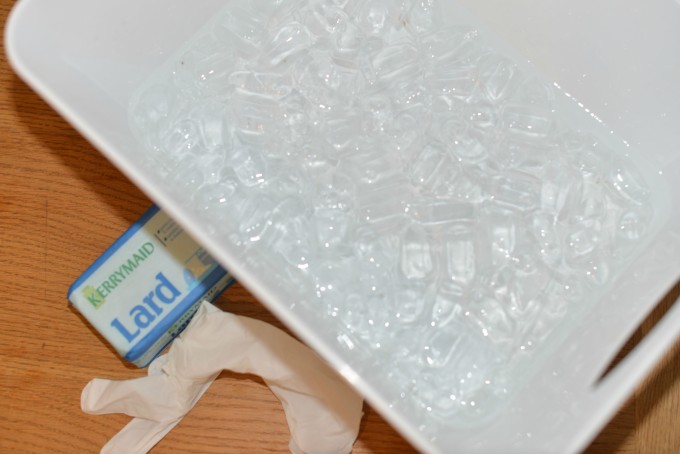
Download the experiment instructions.
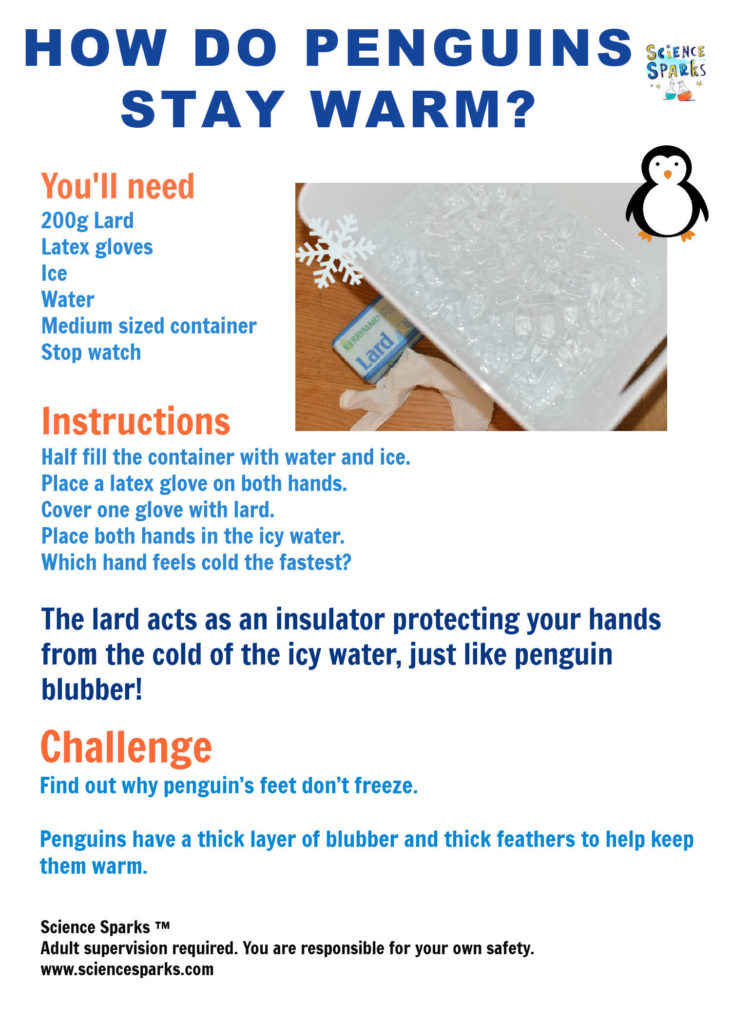
Penguin Challenges
Find out why penguins’ feet don’t freeze.
Create a food chain including penguins, for example:
Plankton - Krill - Penguin - Seal
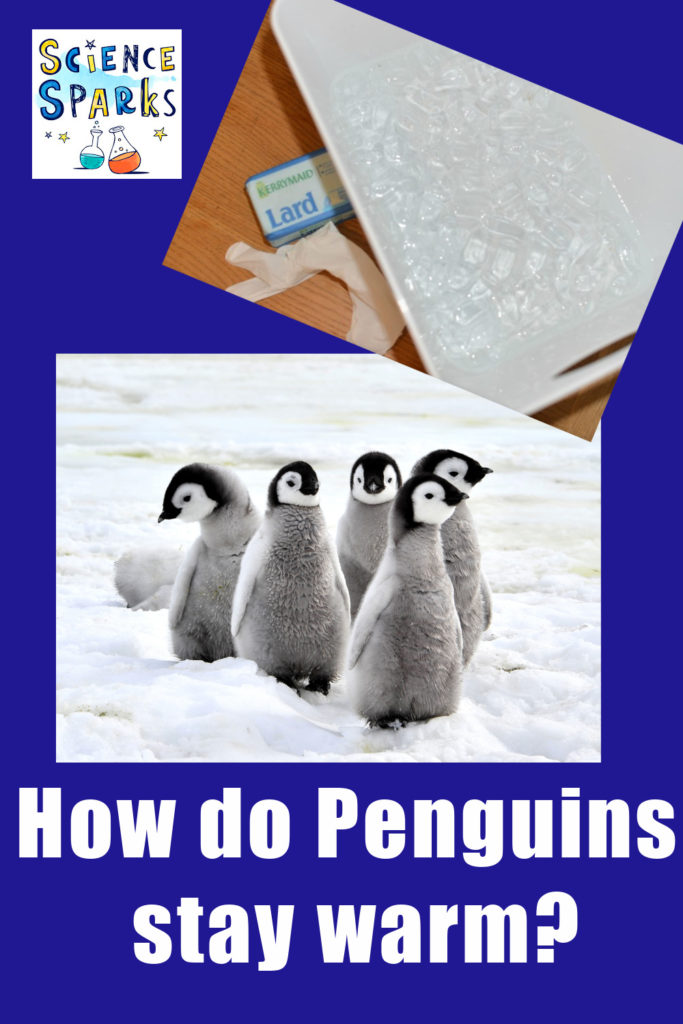
More animal science for kids
Find out why penguins don't freeze.
Make a chicken life cycle sensory bin.
Create fun food chains with my easy craft ideas.
Learn all about Earthworms with my homemade wormery.
I love this Penguin lapbook from Mrs Jones Creation Station.
If crafts are more your thing, Red Ted Art has some BRILLIANT penguin craft ideas.
Penguin Facts for Kids
Most penguins live in Antarctica, but a few live in the slightly less freezing climates of the Galapagos Islands and New Zealand.
Galapagos Penguins cover their feet with their flippers to stop them from getting sunburnt! Clever!
Penguins are birds who spend most of their life in the ocean.
Penguins come onto land to lay eggs and look after their chicks.
Penguins can't fly but are fantastic swimmers.
Did you know Penguins have claws on their webbed feet to help them grip the ground and not fall over?
Penguins are not the only birds that can't fly. Ostriches and Emus also don't fly.
Penguins have brilliant eyesight, which helps them catch fish in the darkness of the ocean.
Penguins store food in their stomach or a special pouch in their throat for their chicks!
Emperor penguins are the largest and can be over 1 metre tall!
Penguin chicks can't enter the sea until they grow adult, waterproof feathers!
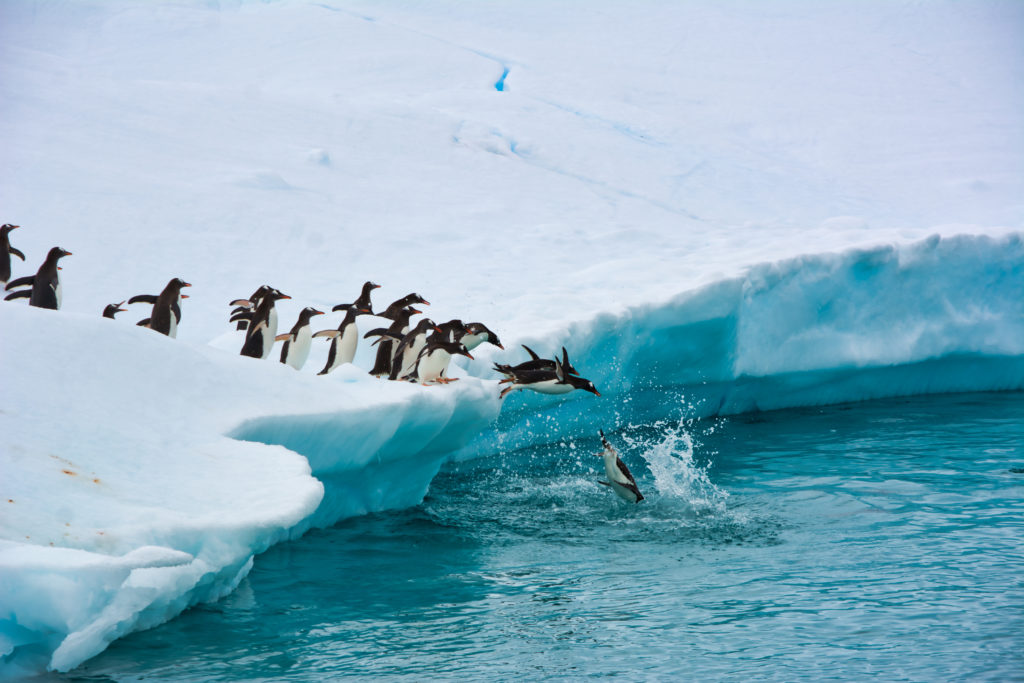
Facts about Antarctica
Antarctica is the coldest region in the world. The average temperature is around -50oC.
Mount Erebus is the highest active volcano in Antarctica and one of the world's most active volcanoes.
The Amundsen-Scott research station, located at the geographical South Pole, is usually home to between 50 and 200 researchers.
The geographical South Pole is the southernmost point of the Earth.
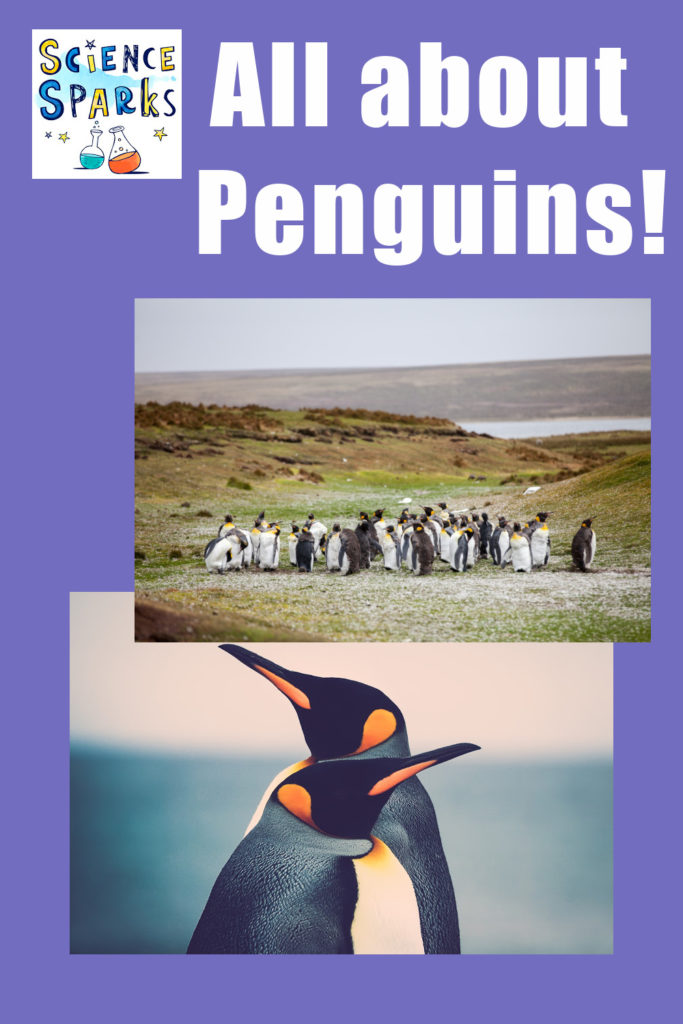
Last Updated on September 15, 2023 by Emma Vanstone
Leave a Reply